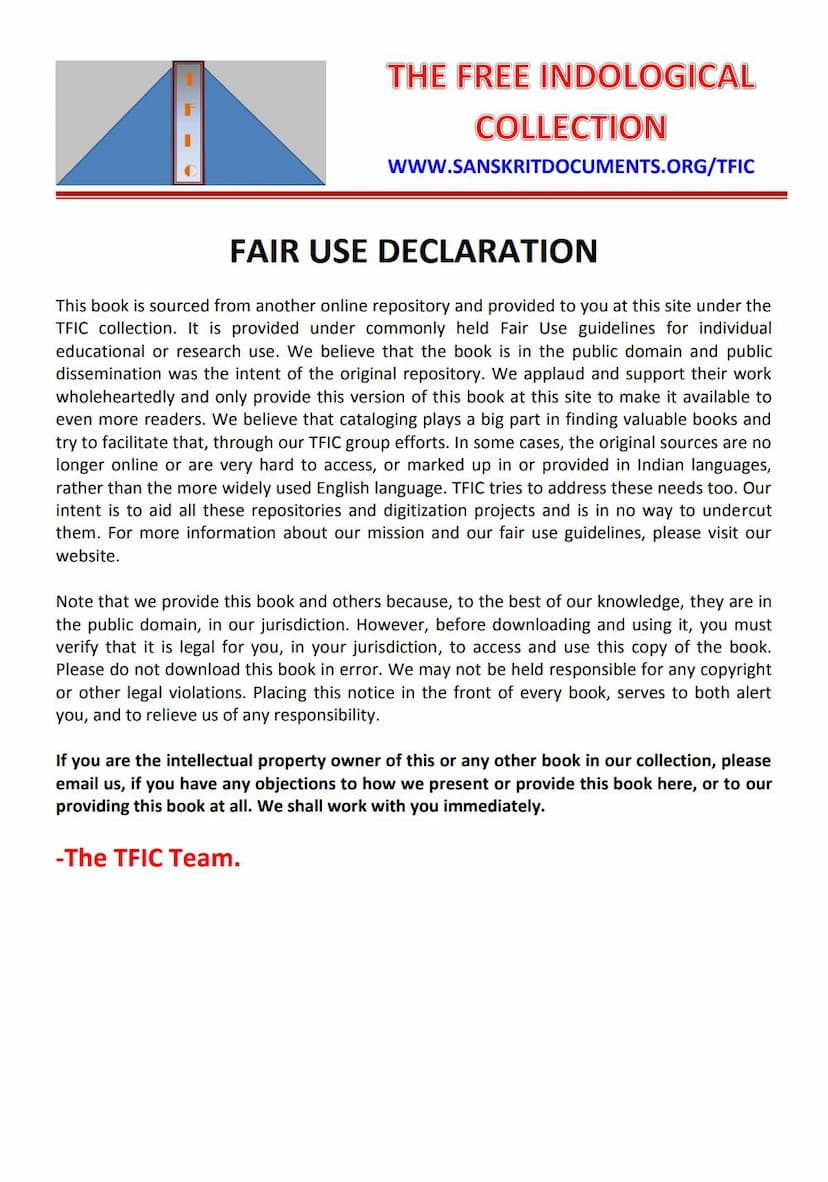Jaina Granth Bhandars In Rajasthan
Added to library: September 2, 2025

Summary
Dr. Kastoor Chand Kasliwal's "Jaina Grantha Bhandars in Rajasthan" is a comprehensive doctoral thesis approved by the University of Rajasthan, published in 1967 by Shri Digamber Jain Atishay Kshetra Shri Mahavirji. This book serves as a detailed catalogue and study of 100 Jaina Grantha Bhandars (libraries of manuscripts) located throughout Rajasthan.
The work is significant for providing extensive information on Jain literature written in Prakrit, Sanskrit, Apabhramsa, Hindi, and Rajasthani. It highlights the Jain community's dedication to preserving not only their own religious texts but also those by non-Jain authors.
The book is structured into several chapters:
-
Chapter 1: Introduction This chapter delves into the reasons why sacred texts were reduced to writing, discussing factors like the increasing volume of literature, the necessity for preservation, the impact of recurring famines, and the evolution of writing practices. It also touches upon the materials used for manuscripts (palm leaves, cloth, paper), inks, copyist qualifications, manuscript handling, and the management of these Bhandars, including methods of preservation like wooden boards, boxes, and underground rooms.
-
Chapter 2: Grantha Bhandars in India This chapter provides an overview of Jaina manuscript libraries across India, noting the impact of Muslim invasions on their destruction. It discusses why some Bhandars were located in remote places for safety and surveys the work done by both Western and Indian scholars in cataloging these collections. It lists important Bhandars in various regions of India, including South India.
-
Chapter 3: Grantha Bhandars of Rajasthan This is the core of the book, extensively detailing the Jaina Grantha Bhandars within Rajasthan. It divides Rajasthan into five divisions: Ajmer, Bikaner, Jodhpur, Udaipur, and Kotah. Each division is further broken down, listing numerous specific Bhandars within cities and towns. For each Bhandar, the book often provides details about its establishment, the number of manuscripts, the languages and subjects covered, important or rare manuscripts, and sometimes information about the patrons or scholars associated with it. Rajasthan is emphasized as having the largest number of Jaina Bhandars in India, largely due to the protection offered by Rajput rulers and the less frequent invasions by Muslim rulers.
-
Chapter 4: Subjects Dealt With This chapter categorizes the vast content of the manuscripts found in the Bhandars. It covers:
- Agama and Siddhanta Literature (oldest parts of the canon, Angas, Upangas, Painnas, Cheda Sūtras, Mula Sūtras)
- Purana Literature (both Vedic and Jaina Purāņas, describing lives of important figures)
- Kavya Literature (poems, novels, dramas, lyrics, often in Prakrit and Apabhramsa, and later in Hindi)
- Carita Literature (biographies of Jinas and other significant figures, often in simpler language)
- Hindi Works on Rasa Literature (narrative poems popular in the community)
- Adhyatma Literature (works on spirituality, soul, and liberation)
- Jaina Philosophy (logic, metaphysics, ethics)
- Short Stories or Kathas (often used to illustrate Jaina doctrines)
- Subhasita and Niti Sastra (ethical teachings and maxims)
- Jyotisa Literature (astronomy, astrology, mathematics)
- Grammar (significant contributions by Jaina scholars)
- Drama
- Ayurvedic Works
- Chanda Sastra (Prosody)
- Lexicography
- Pūjā Literature (rituals and prayers)
- Stotra Literature (hymns and praises)
- Sexology
- Literature on Songs & Dances
-
Chapter 5: Importance of Jaina Grantha Bhandars This chapter consolidates the significance of these libraries, highlighting their:
- Historical Importance: Providing insights into rulers, dynasties, administrative structures, and the socio-political conditions of various periods through colophons (prasastis).
- Literary Centres: Acting as hubs for intellectual activity, fostering the creation of new works and the copying of old ones.
- Educational Centres: Serving as places for imparting education in various subjects beyond religious texts.
- Material for Art and Painting: Housing illustrated manuscripts that shed light on the history of Indian miniature and painting styles.
- Treasure Houses of Earliest Manuscripts: Preserving some of the oldest dated manuscripts, particularly on palm leaves.
- Treasure Houses for Non-Jaina Works: Safeguarding valuable literary and scholarly works by non-Jain authors, often preserving them when other collections were lost.
-
Chapter 6: Material for Research This chapter emphasizes the vast potential for research within these Bhandars, highlighting that many works are still unpublished and even unknown to scholars. It reiterates the significant contributions of Jainas to Prakrit, Apabhramsa, Sanskrit, and Hindi literature, noting that the systematic study of these Bhandars is crucial for a complete understanding of Indian literary history. It also lists numerous writers and their works, categorized by language (Prakrit & Apabhramsa, Sanskrit, Hindi & Rajasthani), providing valuable data for scholars.
The book includes appendices listing Jaina Grantha Bhandars outside Rajasthan and extensive indexes of authors, works, and cities, underscoring the thoroughness of the research. The publisher's note and foreword highlight the immense value of this work for students of Indian literature, particularly Jain literature, and acknowledge the author's dedication to this extensive survey. The publication itself is part of the Research Department's efforts to catalogue and preserve Jain heritage.